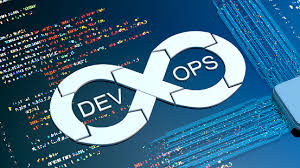DevOps in the Cloud: Automating Your Infrastructure
The fusion of DevOps and cloud computing has revolutionized how organizations build, deploy, and manage software. By combining the collaborative principles of DevOps with the scalability of the cloud, teams can automate infrastructure, accelerate delivery cycles, and foster innovation at unprecedented speeds. This article explores how automating infrastructure in the cloud transforms traditional IT operations, enabling businesses to thrive in a competitive digital landscape.
The Synergy of DevOps and Cloud Computing
DevOps emphasizes collaboration between development and operations teams to streamline workflows, while cloud computing provides on-demand access to scalable resources. Together, they eliminate silos and manual processes, allowing organizations to respond swiftly to market demands. The cloud’s elastic nature complements DevOps practices by offering environments that can be provisioned, scaled, and dismantled programmatically. This synergy enables teams to focus on delivering value rather than managing hardware, reducing time-to-market for applications.
The Role of Automation in DevOps
Automation is the backbone of DevOps in the cloud. By automating repetitive tasks—such as server provisioning, configuration management, and deployment—teams reduce human error and ensure consistency. Tools like Terraform and AWS CloudFormation enable Infrastructure as Code (IaC), where infrastructure is defined through scripts and version-controlled like software. This approach allows teams to spin up identical environments for development, testing, and production, ensuring reliability across stages. Automation also empowers continuous integration and continuous delivery (CI/CD), enabling frequent, incremental updates without downtime.
Infrastructure as Code: The Foundation of Efficiency
IaC redefines infrastructure management by treating servers, networks, and databases as code. Using declarative or imperative scripting languages, teams automate the provisioning and management of cloud resources. For instance, a Terraform script can deploy a fully configured Kubernetes cluster across multiple cloud providers with a single command. This not only accelerates setup but also ensures compliance and reduces configuration drift. Version-controlled IaC templates promote transparency, allowing teams to audit changes and roll back updates effortlessly.
CI/CD Pipelines: Accelerating Software Delivery
CI/CD pipelines automate the journey from code commit to production. Cloud-native tools like Jenkins, GitHub Actions, and AWS CodePipeline integrate seamlessly with cloud platforms, enabling automated testing, building, and deployment. For example, a CI pipeline can trigger unit tests upon a code push, while a CD pipeline deploys the validated build to a cloud environment. This automation reduces manual intervention, minimizes deployment failures, and ensures faster feedback loops. In the cloud, these pipelines leverage scalable compute resources, handling large workloads without bottlenecks.
Benefits of DevOps in the Cloud
Automating infrastructure in the cloud delivers tangible benefits. Scalability is a standout advantage: cloud platforms like Azure and Google Cloud enable auto-scaling, ensuring applications handle traffic spikes without overprovisioning. Cost efficiency follows, as pay-as-you-go pricing models align expenses with actual usage. Automation also enhances reliability; self-healing systems detect failures and automatically restart services or replace unhealthy nodes. Additionally, cloud-based DevOps fosters collaboration, with centralized tools and real-time monitoring accessible to distributed teams.
Challenges and Considerations
Despite its advantages, cloud-based DevOps presents challenges. Security remains a top concern, as automated processes can inadvertently expose vulnerabilities if misconfigured. Implementing robust identity and access management (IAM) policies and integrating security into pipelines (DevSecOps) is critical. Toolchain complexity is another hurdle; managing numerous tools for IaC, CI/CD, and monitoring requires expertise. Organizations must also address skill gaps by training teams in cloud technologies and DevOps practices. Lastly, monitoring automated workflows is essential—tools like Prometheus and AWS CloudWatch provide insights to optimize performance.
Best Practices for Success
To maximize the benefits of DevOps in the cloud, organizations should adopt the following practices:
1. Start small: Automate one workflow at a time, such as infrastructure provisioning or testing, before scaling efforts.
2.Embrace observability: Use logging and monitoring tools to track the health of automated systems.
3.Prioritize security: Embed security checks into CI/CD pipelines and conduct regular audits.
4.Foster collaboration: Break down silos by involving development, operations, and security teams in planning.
5.Leverage managed services: Use cloud providers’ managed DevOps tools (e.g., AWS CodeStar, Azure DevOps) to reduce operational overhead.
The Future of DevOps and Cloud Automation
As cloud technologies evolve, DevOps automation will become even more intelligent. AI-driven tools may predict infrastructure needs or auto-remediate issues, while serverless architectures could further abstract infrastructure management. Edge computing will extend DevOps practices to decentralized environments, demanding automation frameworks that span hybrid clouds. Ultimately, organizations that master DevOps in the cloud will lead in innovation, leveraging automation to build resilient, agile, and customer-centric solutions.
Conclusion
DevOps in the cloud, powered by automation, is no longer optional—it’s a necessity for modern IT. By integrating IaC, CI/CD, and cloud-native tools, businesses achieve faster deployments, cost savings, and scalable systems. While challenges like security and complexity persist, adopting best practices and staying ahead of technological trends ensures long-term success. As the digital landscape evolves, the marriage of DevOps and the cloud will continue to redefine what’s possible in software delivery and infrastructure management.

